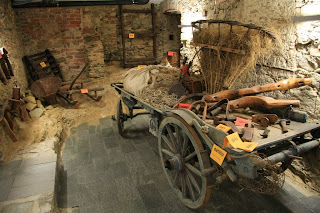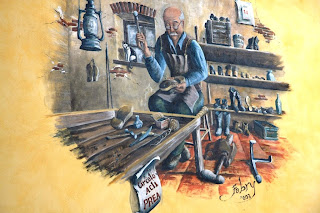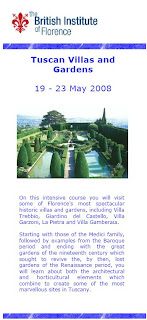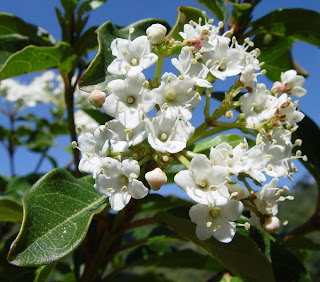

From the
last post on this subject, you might recall that today was our “correct” day to go back for our permesso di soggiorno/i. (We weren’t successful the first time because were not prepared to wait 4+ hours.) Today we arrived at about 9:10am and already the place was packed. There was some initial confusion about which line to get into but showing our letters (and the fact that we missed the first assigned date) put us in a line to get a “C” ticket. Last time it was a “B” ticket. But, oh, someone must pull the ticket from the machine and hand it to you. I guess it makes sense because there is so much pushing and shoving and confusion, people would just be taking one of every ticket to cover their options and the machine would probably break. So we got tickets C401 and C402. They were currently serving C318.
So we sat and read and chatted. Then around 1:15pm our number got called, we went together and the clerk was fine to process us at the same time. For us since we filled out the kit properly (I guess) the clerk only had to see 1) our letter summoning us 2) our passport and 3) 4 passport-sized photos. It’s odd because the letter summoning us made it sound like we were missing all sorts of information. Maybe that’s because people come to these appointments (a term used loosely here) without having filled out the yellow kit? Who knows?
After about 5-10 minutes for both of us the clerk sent us to window 17-18 around the corner to finish the processing. Silly us, we thought that we would get something like a card all laminated and stuff, hehehe. No such doings. We each got called up and they take all of your fingerprints electronically on this little glass surface, one-at-a-time. She kept yelling at me “schiacciate!” (press!) – ciao bella, I am pressing. Frustrated, she had me rub hands together. That seemed to work. Then you sign something attached to your photos and the big finale, drum roll please, you are handed a piece of paper telling you when to return for you card (see attached). For us it is August 20th. We’ll have been gone for several months. Oops.
We were wondering if we should have told them we were leaving soon. You can try it, but we were guessing it would not speed up anything. So that’s it.
Lessons:
-->Your letter is key, don’t lose it, and perhaps even make a photocopy of it.
-->Get there early (questura opens at 8:30am? – verify!), yes we knew that but were a bit leisurely with our breakfast and with restaurant hours (going to bed at 1:00am) we weren’t too eager to jump out of bed.
--> Bring work to do or books to read.
--> There are restrooms there but hope your quads are strong.
--> Numbers start going quicker later in the day so be careful leaving and thinking they won’t reach your number that quickly.
--> You can walk in and out of the place, but bring your ticket and letter to be on the safe side.
--> Remember it’s the journey not the
soggiorno.


















































